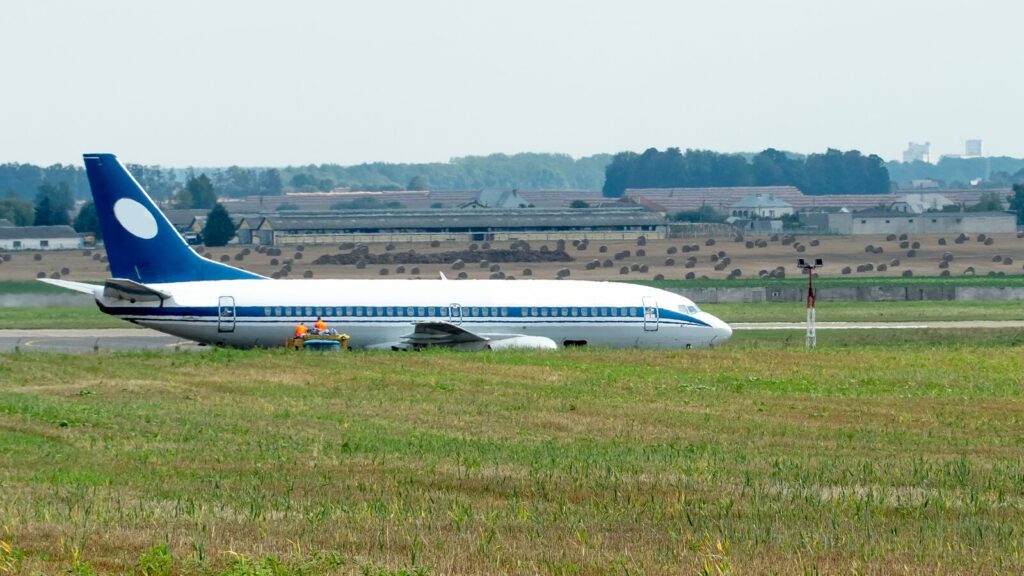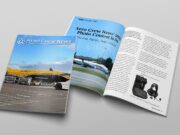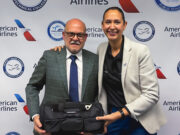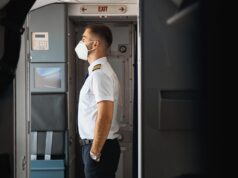
As aviators, we strive for the perfect flight every time. However, an argument could be made that such a thing does not exist, yet pushing for excellence each time we go up provides one of the essential underpinnings of an impeccable industry safety record. Yet incidents and accidents still occur. In this month’s article on when disaster strikes (in this case an incident or accident), we provide some guidance on what to do when the holes in the Swiss cheese line up and you fall through.
Let us start with a quick review of what incidents and accidents are. You will recall from 49 CFR Part 830 that the FAA and NTSB define an accident as an event involving an aircraft with the intent to fly where a person is killed (obvious one) or seriously injured (requiring hospitalization for more than 48-hours and within seven days of the event for burns, breaks, and bleeding, etc.). Furthermore, that substantial damage has occurred to the aircraft with regard to strength, performance, and/or flight characteristics. An incident, basically, is an accident measured in terms of lesser severity. The FAA and NTSB of course go into further classification of these events, but for the purposes of this article, it does not particularly matter which you have been specifically involved in, because our focus is what to do when faced with one.
Once you find yourself in an emergency situation (often leading to an incident or accident), and aside from immediately taking a deep breath (seriously, do this first to overcome the startle factor and center yourself for what comes next), accomplish the pilot’s mantra of aviate, navigate, communicate. What should you do next though? How about check on your flying partner and get on the same page to face the threat together. Focus on training and complete non-normal followed by associated normal checklists. Notify ATC, declare an emergency and request assistance (e.g., crash, fire, rescue), then check-in on the cabin crew as applicable. As time allows, make a short, to-the-point passenger announcement in the clearest, calmest, measured voice possible that goes something like, “Ladies and gentlemen, this is your captain speaking. We have unfortunately encountered an emergency situation that requires us to land as soon as possible. Please listen closely and follow flight-attendant instructions and I will speak to you again once we are safely on the ground.” If you are already on the ground when an undesired event occurs, your announcement choices might be greatly simplified: “Remain seated,” (usually repeated three times); or “Release your seatbelts and get out,” (followed by an evacuation alarm if installed on your aircraft).
These tasks and responses are typically taught and tested in simulator events during initial and recurrent training, so for most of our readers this is likely nothing new. However, have you thought much about what to do once the immediate or quick reaction checklist is complete and you release your own seatbelt to leave the flight deck?
Consider the following: If evacuation is required, leave your gear, take a passenger count with you, and go back to help the flight attendants get the passengers off, complete a head count as soon as possible, and keep everyone corralled in a safe spot until help arrives. If evacuation is not required, with the engines shut down and parking brake set, leave the flight deck and go back to the cabin so the passengers can see you and tell them in basic terms what is going on and what you are doing to take care of them. This step is obviously not necessary for a cargo or ferry flight. Be factual and to the point, and do not descend into blame, interpretation, or technical jargon. Keep the message simple and let them know what the plan is to get them safely off the plane, and back to the terminal (if applicable). Arrange for medical assistance as necessary for you, your crew and passengers, and do not forget to take charge of the scene until relieved by other authorities.
Here comes perhaps the hardest part of all though: the company and multiple local, state, and federal agencies are or will likely be involved shortly and you need to say as little as possible at this point. Whether you realize it or not, you are in shock. Do not make any statements – just like in the old war movies, provide only name, rank, and serial number (i.e., name, employee number, flight number, souls on board, and your contact information). You need to secure yourself at this point – causation will be determined during the ensuing investigation; so, once you have completed looking after the well-being of your crew and passengers, contact your union or pilot group representative. (Really, do this as soon as it is safe to do so.) Do not contact your chief pilot, domicile manager, or crew scheduling. Get your union or pilot representative between you and the company and let them help you. They can make these calls for you and get you into a hotel away from the airport, authorities, your company, (and worse) the media. Moreover, they will provide access to legal representation to advise you on what to do and not to do. You will of course be required to complete reports and speak with company and other investigative representatives, but your union can assist with this as well. The goal right now is to get to a place physically and mentally where you can decompress and put logical, reflective thoughts together. Even if whatever occurred did not result in any injuries or significant aircraft damage and there was a safe outcome, the stress response that in the moment is masked by adrenalin and trained response, will shortly emerge and become at best distracting, and at worst, debilitating. It is highly recommended (and your union or pilot representative can assist and support you on this) that you do not immediately return to flight duties following an incident and definitely not following an accident, although some airlines may actually ask, expect or even pressure you to continuing flying.
Pilots who have continued flying in the wake of a non-catastrophic event have routinely reported wishing they had not done so, citing significant distractions as they lose focus on the current flight replaying what happened on the previous one, and descending into “what ifs” and the unhealthy negative self-assessment of what they should have, or could have done differently. Instead, go to a hotel or go home, and interface only with union representatives until advised otherwise. Also, take advantage of other union and pilot group resources such as ALPA’s Critical Incident Response Program (CIRP), or other similar pilot group stress-response support services.
Chair fly your incident and accident response on the road and we will see you next month for things to think about when severe weather results in an operational meltdown. Stay safe.















































